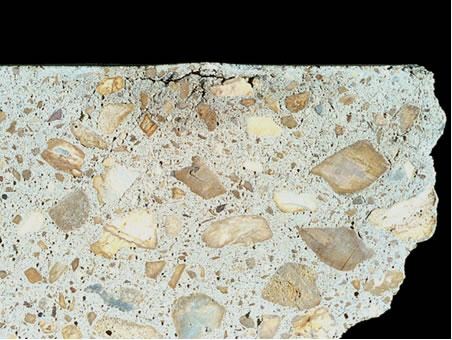
![]()
Delaminations are a big problem in concrete slabs. Delaminations happen when the natural settlement of the cement and the aggregate in the concrete settle after fresh concrete is poured and compacted. The settlement happens naturally which causes bleeding (excess water and air to become displaced). The lighter of the materials rises to the surface of the concrete and gets trapped under the densified surface mortar. If the finishing process happens to early and the concrete surface is sealed before the bleeding is done it compromises the integrity of the concrete. As the concrete hardens, void spaces under the surface develop where the air or water is trapped. The weakened areas created by the voids usually detach at some point when the slab is being used.
When is delamination a problem then? When only one isolated area has delamination then the concrete slab should be okay, but if the problem is all over the slab then that creates a much bigger problem. There are various degrees and forms of delaminations. When a mix is sticky with a higher percentage of fines, blisters are often the result. Blisters are small and isolated delaminations typically 1 to 3 inches in diameter. This happens when moderate to high rates of evaporation occur and when the concrete is finished too early. When the finishing occurs too early over the entire slab then delamination can be more widespread and impact larger areas over the surface.
Avoiding delaminations is critical. The easiest way to do this is to wait until the bleeding process is complete to start finishing the slab. This is not as easy as it sounds however. Many factors impact the timing of each job, factors such as thick slabs, sticky mixes, different kinds of subgrades, different cementitious contents, initial concrete temperatures, and changes in ambient temperatures. It takes a skilled finisher to properly time the process of finishing the concrete after the bleeding is complete.
If delamination has already occurred then you will need to remove all the compromised concrete down to where the sound concrete is. Sometimes the delamination is minor enough that the remaining sound concrete can be ground down until smooth and then sealed. If the problem is cannot simply be ground down then an overlay can be applied to create a sound new surface. It’s a good idea to apply a small section of the resurfacing material to the existing concrete to make sure that the surface texture and appearance matches the surrounding concrete. (Click here for some do's and don'ts to avoid delamination.)
There are so many creative and custom options for finishing concrete, but first and foremost important is the concrete itself. At Custom Concrete Creations we have state of the art equipment and a properly trained team with years of experience. Custom Concrete Creations is a premier contractor serving the Omaha area as well at the Midwest. Give us a call or send us an email for your custom concrete finishing needs today!
